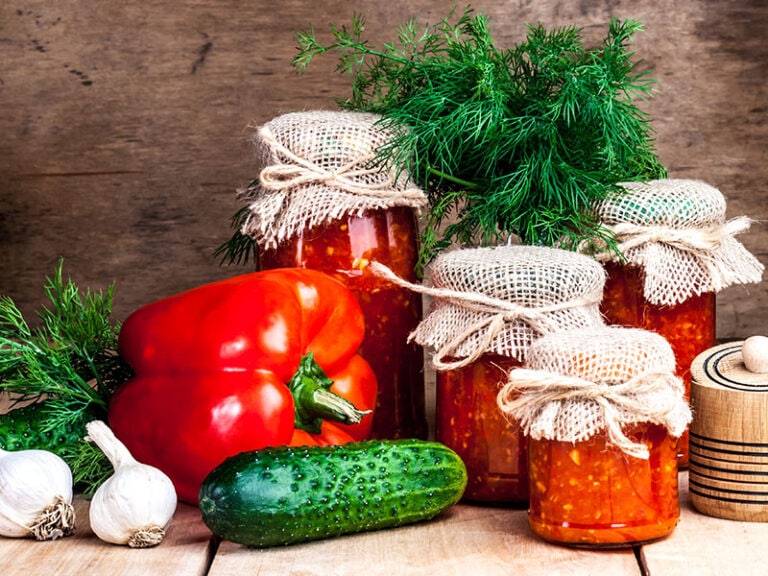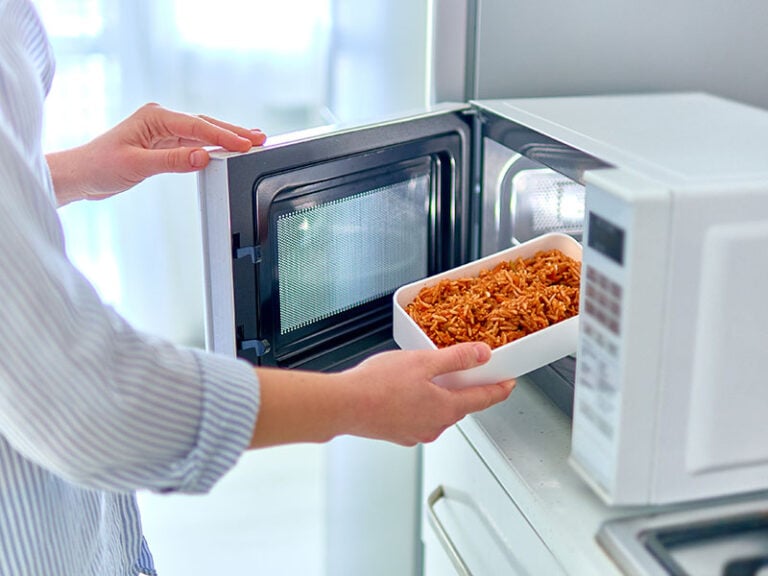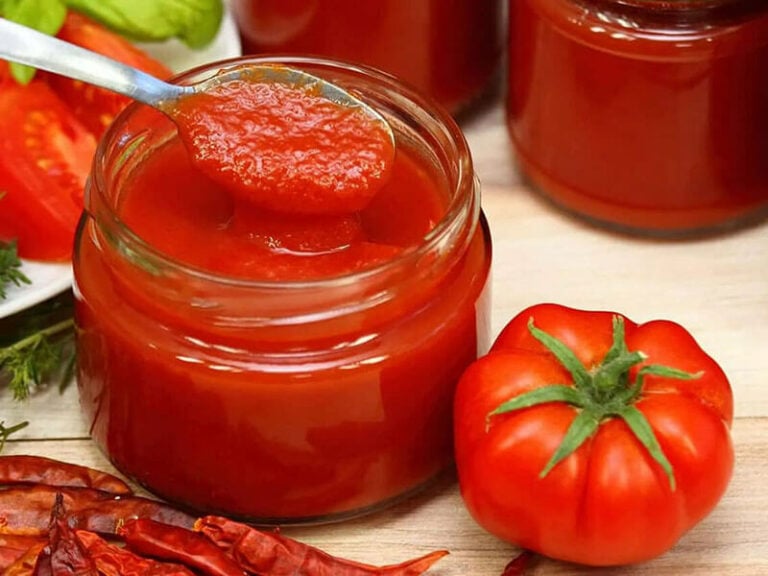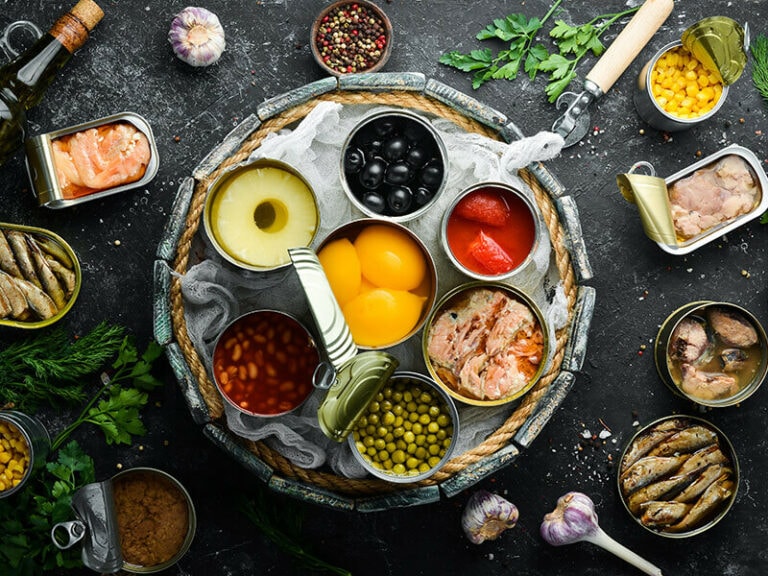Do you know how to cook canned food in microwave? Many people like to reheat canned food in the microwave. Indeed, using the microwave to prepare canned food is a wise decision because it saves time and elbow grease.
However, not everyone understands how to manage it correctly. Therefore, some bad outcomes may occur. In this post, I’ll explain how to use a microwave for canned food and useful tips to help you reheat your food more confidently!
What Do You Need To Know About Canned Food?
Plenty of canned food available today is both nutritional and affordable. Busy people can whip up a quick dinner using canned food. Here are some interesting facts about canned foods you may not know.
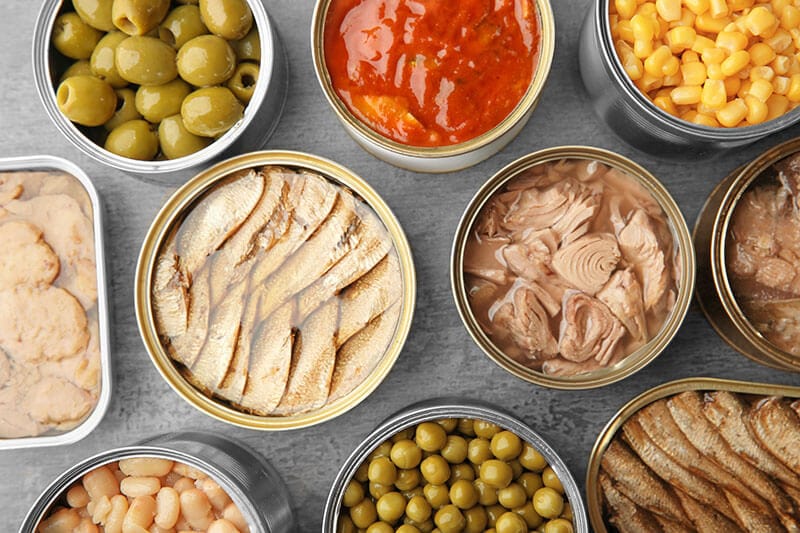
The Nutrients Of Canned Food
Canned food, despite common assumptions, is not less healthy than other food. Protein, fat-soluble vitamins, carbohydrates, and fat have all been preserved during the canning process (1). Canned food has a more robust flavor than fresh food, depending on the technique used.
Additionally, canned food is less expensive than fresh fruits or vegetables and more convenient to prepare than raw food. The biggest advantage of canned food is the long expiration date. The canning process can lengthen the shelf life from one to five years.
Unfortunately, essential vitamins such as antioxidants or vitamins B and C have been removed during the canning procedure. So it would be best to restrict your consumption of these products.
What Are Cans Made Of?
Cans sold currently are often constructed of tin, aluminum, or steel. The majority of canned goods are manufactured of tin-coated steel. Some cans are made from chromium-coated steel(2).
Manufacturers categorize metal cans as two-piece and three-piece based on the manufacturing technique. These materials are ideal for producing cans due to their non-rusting qualities and excellent durability.
Aside from metal, metal cans usually include a plastic film as a thin layer to prevent the food inside from corroding the metal. These layers are often made from epoxy or plastic, which contains BPA. When you heat the can, BPA and other toxins might be released from the plastic.
Here’s an insight into the history of canned food!
Is It Safe To Put A Can In The Microwave?
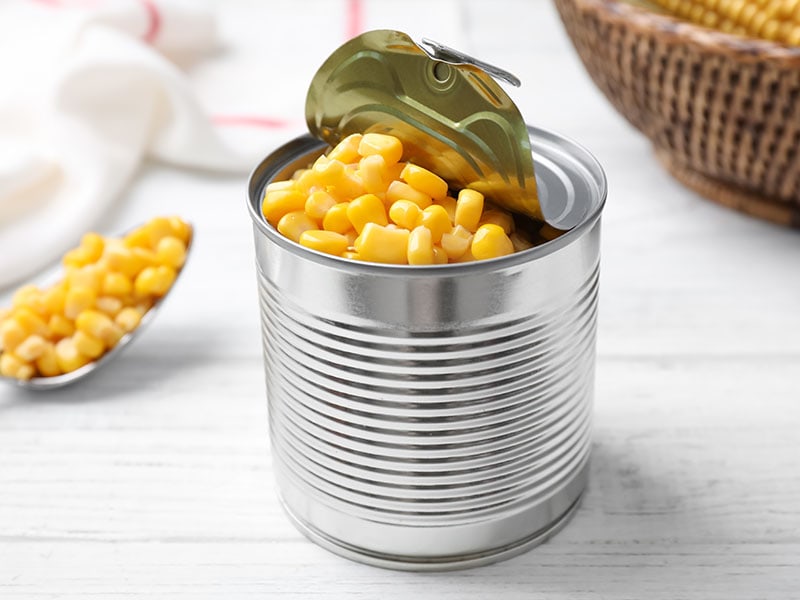
Putting canned food directly in the microwave is not advisable. Cans are made of metal, which shields the food within from microwave waves. When you microwave the entire can, just the top and bottom of the can heat up while the food inside remains the same.
Furthermore, metals such as aluminum or steel respond rapidly to heat. They catch fire and burn when exposed to high temperatures. It might result in an electrical hazard or a fire. You don’t want to start a fire because of microwaving your canned food.
Additionally, metal has the potential to reflect microwave radiation, making your microwave more likely to be damaged (3). Lastly, metal cans may release poisonous compounds like chromium, nickel, or BPA when heated for an extended period.
Metal can is listed among the top things you should not put in the microwave.
Can You Eat Canned Food Without Reheating It?
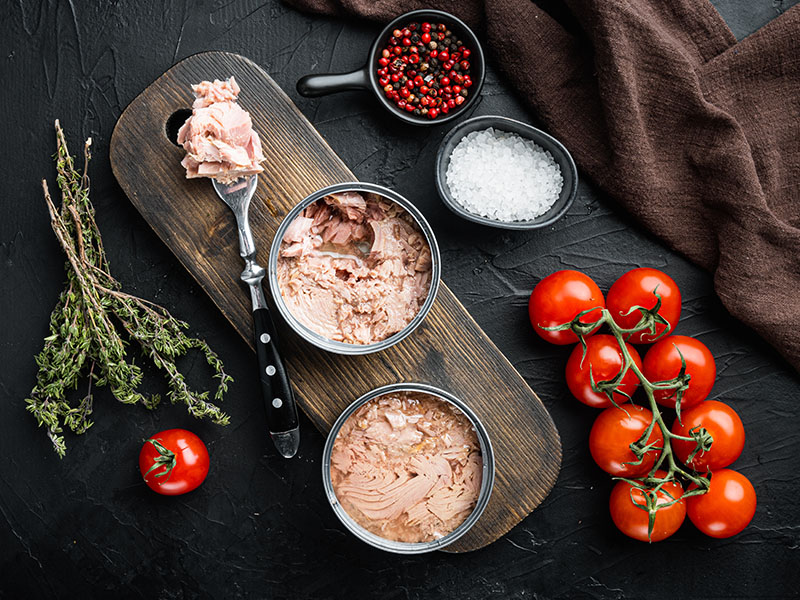
Canned food is intended for instant consumption without the necessity for reheating. Food has gone through the cooking and canning process before being put on sale.
The manufacturer heats the food to a high temperature to eliminate the microorganisms. Therefore, you can store the meal for an extended period without getting fermented, spoiled, or hazardous to people’s health.
You can eat cool canned food, such as chicken noodle soup or corned beef if you don’t want to enhance their flavor, as canned foods have already been cooked. But in some cases, such as canned soup, you would like to reheat it because it will taste significantly better than cold soup.
In addition, if you are not sure you can consume all of the food, you should not eat it directly from the can. Eating right from the can without finishing the whole meal may increase the potential of germs entering the food. This will ruin canned food and put you at risk of digestive problems.
How To Cook Canned Food In The Microwave
Incorrectly microwaving canned food can cause an unnecessary mess for cleanup later. But don’t worry, because I’m here to tell you how to safely microwave canned food. Check out the step-by-step instructions below!
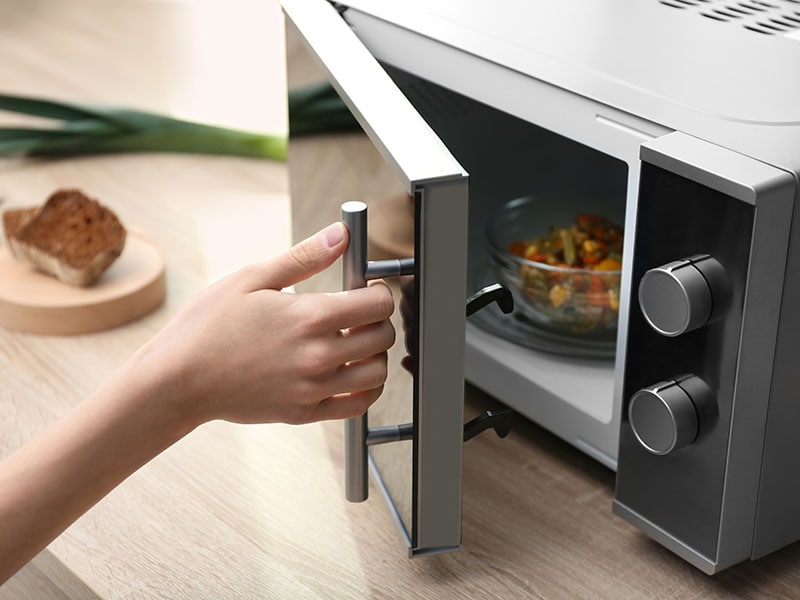
Step 1: Take Out The Food From The Can
You can’t leave canned food in the can and toss it straight into the microwave. Therefore, the most critical step is opening the can and transferring the food to a microwavable container. You can also use a microwave-safe bowl or plate instead.
Step 2: Cover The Container With A Lid
Next, cover the container with a microwave-safe lid. If you don’t have one, you can use microwave cooking bags, paper towels, or napkins. Covering the container will help keep the moisture within the food and preserve the flavor.
You need to loosen the lid a little bit to allow the steam to escape. Otherwise, it can accumulate inside to build great pressure that will eventually lead to an explosion.
Step 3: Microwave The Container
Choose a medium mode. You don’t need to use high temperatures since the food has already been cooked. Set the timer for around 2 to 4 minutes. You should not heat the meal for more than 4 minutes.
The longer the duration, the more likely the meals lose nutrients. Moreover, leaving your container in the microwave for too long will damage it. You can check the instructions from the manufacturers to know the optimal cooking time.
Step 4: Stir The Food
You should stir your food every 30 seconds or 1 minute. Oil-based foods tend to heat up faster than water-based ones.
Meanwhile, water-based meals will heat up faster on the top or bottom. In any case, stirring the food helps distribute the heat more evenly and also avoids overheating or scorching the food.
Step 5: Take The Container Out
The food is done when the temperatures are about 165°F (74℃). Or you can turn off the microwave when you see the food bubbles or steam.
After reheating, take the food container out of the microwave. Unless you want to be burned, be cautious with this step. Use oven mitts to ensure your safety.
Do you know how to microwave canned baked beans safely? Toss the can away!
Pro Tips For Microwaving Canned Food
You must’ve understood how to safely microwave canned food, right? Nevertheless, check out the tips and tricks below to make the most of your canned food and microwave!
- Metal materials should not be in the microwave, especially cans and food containers. These materials can destroy the microwave by reflecting the radio waves and cause problems like electrical short or fires.
- Don’t pour water into canned food. Drain out the water and transfer the food to microwave-safe utensils if you microwave canned vegetables.
- Cover the food with the microwave-safe lid. A reasonable gap allows the steam to escape.
- When reheating dense foods, you may choose a shallow plate. It will help the food cook faster than the deep container.
- Never overfill the container with food, as the microwave cannot heat the food evenly. You can microwave in several batches if you have a lot of food to reheat.
- Heat the food until it produces bubbles or steam, then give it a good stir to distribute the heat more evenly.
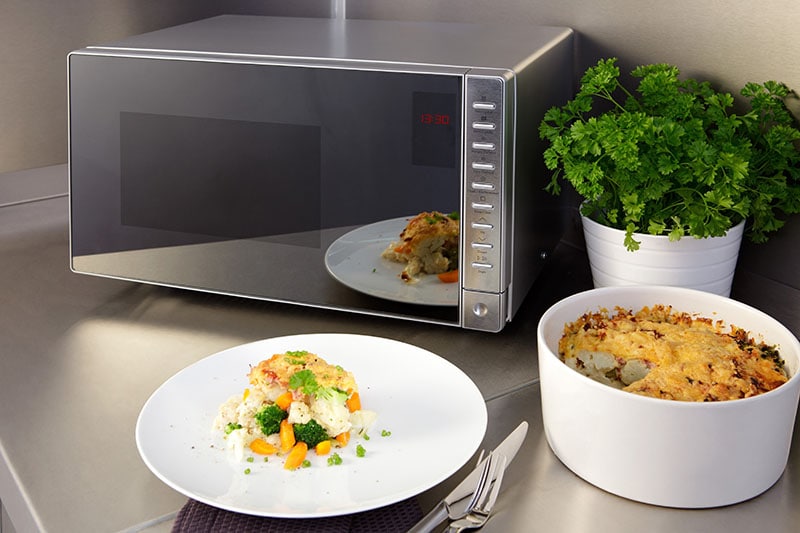
Is It Safe To Heat Canned Food Directly In The Can?
There are more appropriate methods than cooking food directly in the can. Metal cans are designed to keep food safe from ambient temperature and microorganisms. Therefore, manufacturers must seal them to prevent air from entering the cans.
When you heat food without opening the lid, the contents inside tend to expand when exposed to heat. However, they need more space. As a result, there is an excellent likelihood that they can blow or explode.
In addition, heating cans at high temperatures causes contaminants like chromium, nickel, and BPA to release and poison your food. These chemicals will have an impact on the neurological and reproductive systems.
You should not boil canned food inside the can because it’s dangerous. However, when you lack the necessary materials, such as survival circumstances, you can still reheat canned meals in this way. But you need to follow exactly the instructions to reduce the risks.
Peel off the can’s outer paper, then make two holes in the can. Plus, use a can opener to open the can. When the food inside heats up, the heat and pressure can escape, and there will be no explosion.
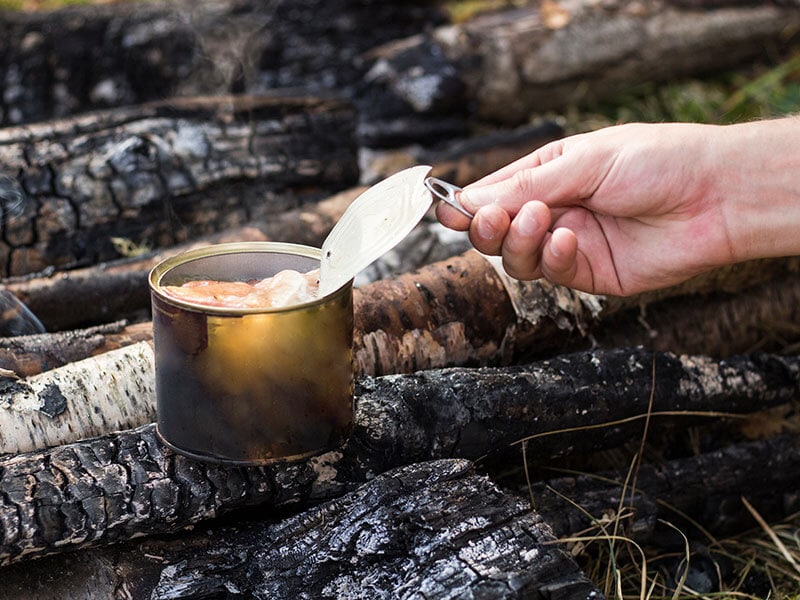
Other Methods Of Cooking Canned Food
Microwaves are handy for warming food, but it isn’t your only option. When you don’t have a microwave at hand, you can still reheat canned food using any method listed below.
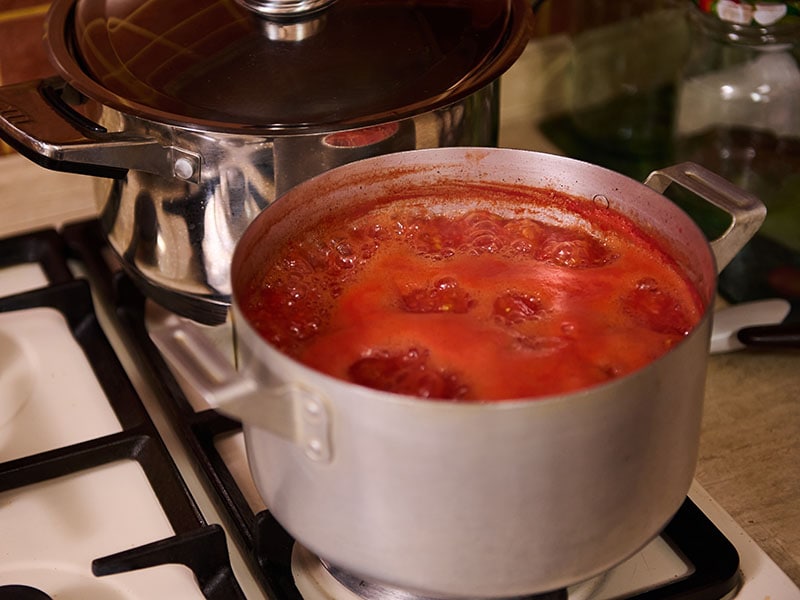
Steam Canned Food
When you don’t have a microwave, you can steam canned foods. Follow the step-by-step instructions below.
- Fill a pot approximately with water, but avoid pouring too much water into it. The water can overflow when it’s boiling.
- Place it on the stove. On top of the pot, place a steam basket. If you don’t have one, you can use a strainer.
- Transfer the food to another container, dish, or plate.
- Cover the pot with a lid and place the container inside the tray.
- Set the temperature according to the package instructions, and wait till you feel the food is hot enough.
- Then turn off the stove, take out the meal and serve.
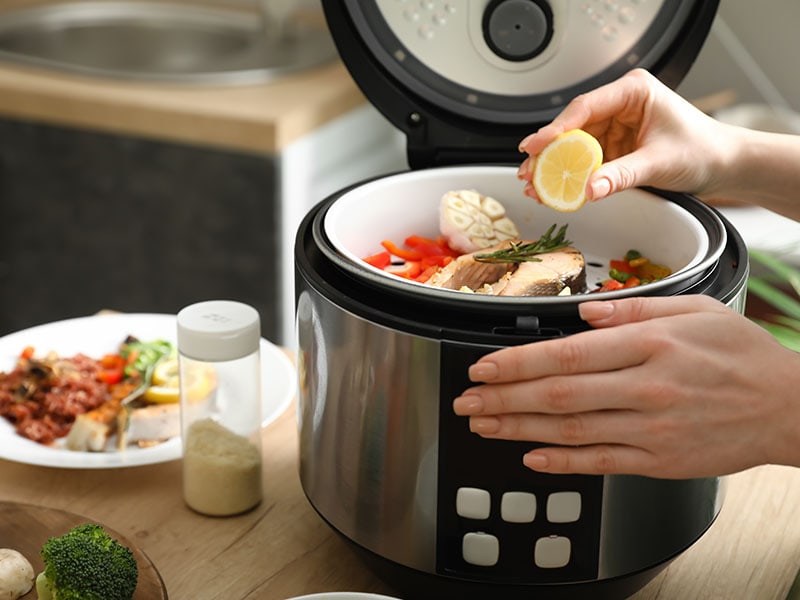
Cook Your Canned Food Directly On The Stove
If the steaming process is slightly complicated, consider cooking canned food straight on the stove.
- You don’t need to prepare canned fruits and vegetables again. Just drain the water.
- Set the temperature from low to medium. Don’t use high heat to warm pre-cooked food.
- Put the food in the pan and cook for 3 to 5 minutes, stirring constantly. Don’t cook the food for more than 5 minutes. Since canned food is pre-cooked, heating it too long will overcook your food.
- To finish this process, serve the food on a plate or bowl. Now you can enjoy your meal.
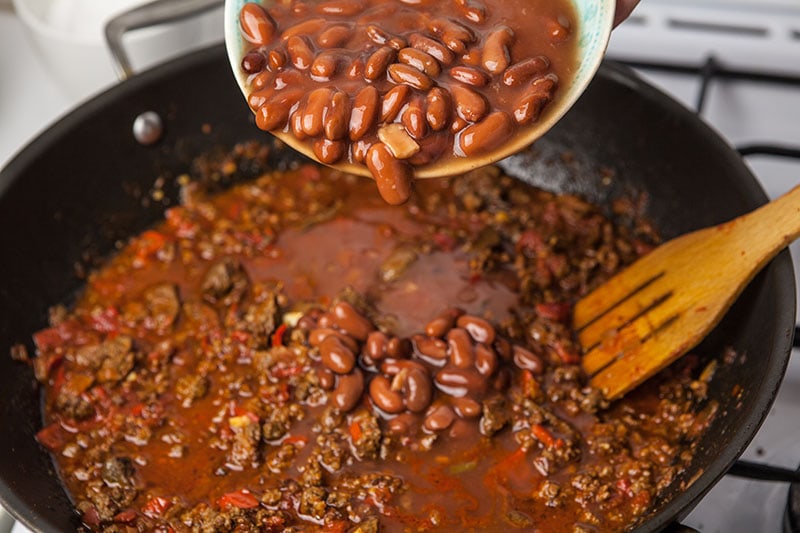
Use The Slow Cooker
You can use a slow cooker to warm up canned food. This method may take slightly longer than others, but it is far safer than using the microwave.
- Set the slow cooker to a high temperature.
- Transfer the contents within the can into the slow cooker.
- Put the lid up.
- Set the timer for 1 or 2 hours.
- Stir it often to heat the food evenly.
- Take out the food to a plate, and you’re ready to eat.
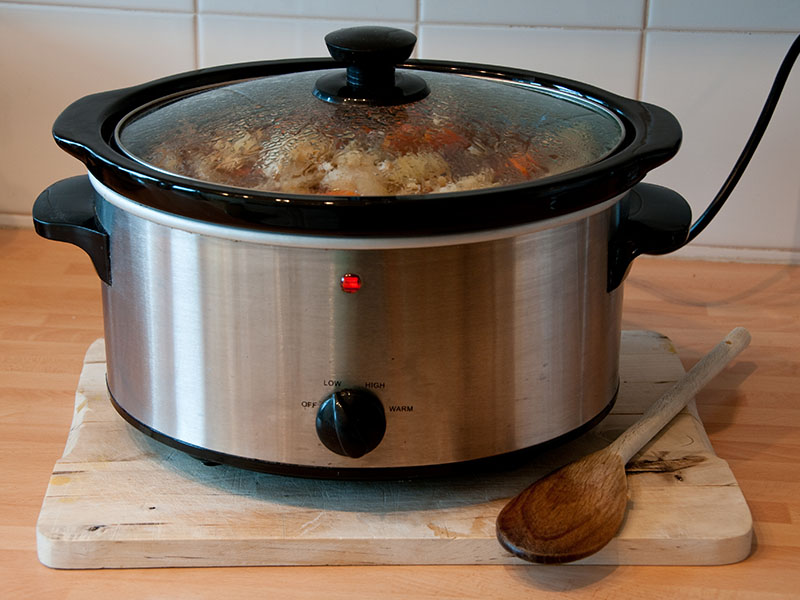
When Should You Avoid Canned Food?
If you are unsure about the source or the quality of canned food, you shouldn’t eat it. Besides, you shouldn’t eat canned food that has been open for too long.
After you open the canned food, you need to finish them in 2 or 3 days. You can keep them in the fridge to lengthen their shelf life but not too long.
You also must avoid eating canned food if it shows any signs of damage, such as leaking, bulging, or denting. It may increase the risk of bacteria invading your meals and lead to food poisoning.
The canning process causes food to lose certain vital nutrients compared to fresh food. As a result, you should limit your intake of canned foods.
Finally, the liner of canned goods may contain trace quantities of BPA. It is a chemical that people usually find in plastic. It can lead to high blood pressure, heart disease, or type 2 diabetes. Therefore, I advise you should not directly rewarm the food in the can.
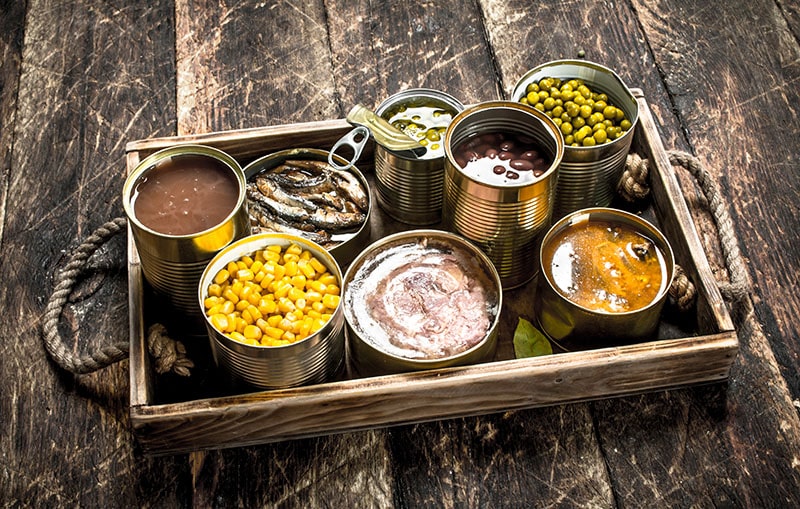
FAQs
Aside from the crucial facts mentioned above, you can also learn about other topics people are interested in regarding canned food and the proper use of the microwave. Check out these commonly asked questions!
Transfer Your Canned Food Before Microwaving It
When fresh food is unavailable, canned food might be an excellent substitute. They are high in nutrients and are pretty handy. Using the microwave to cook canned food is a fantastic idea, but only when you don’t directly reheat the whole can in it.
This post has given you all the information about microwaving canned food. I hope you found this article helpful for you. Please express your thoughts in the comment section. Your shares and likes are the most valuable rewards to me.
Paragraph
- McDonnell, K. (2019) Canned Food: Good or bad?, Healthline. Healthline Media.
- Sand, C.K. (2020) The role of metal in food packaging, IFT.org.
- Zimmerman, L. (2010) Home, Mit Engineering.

